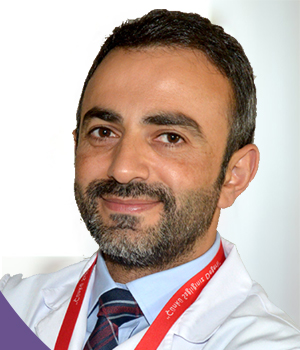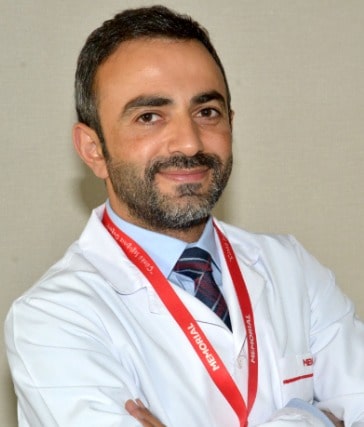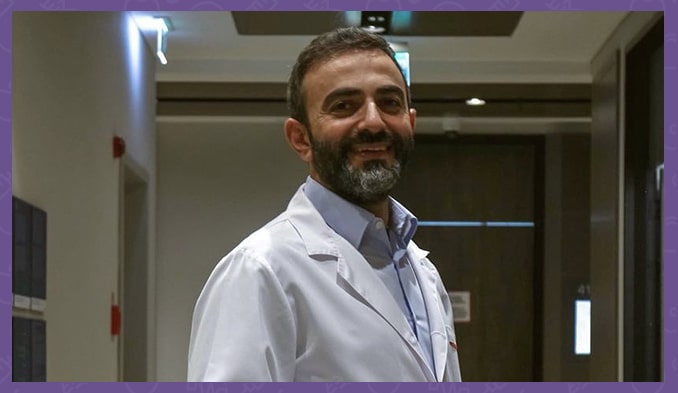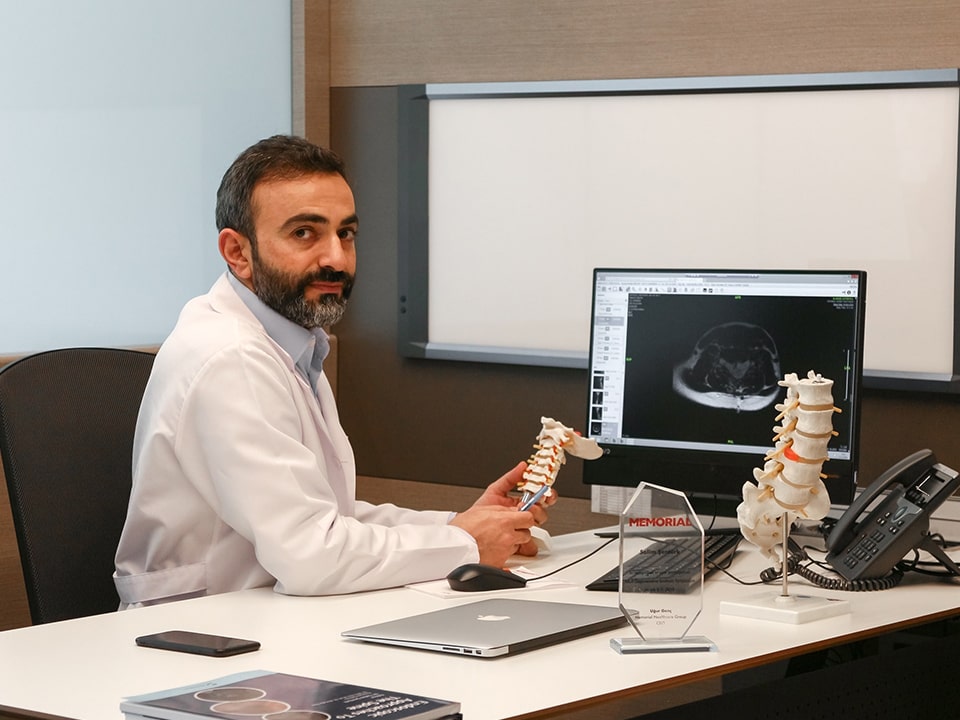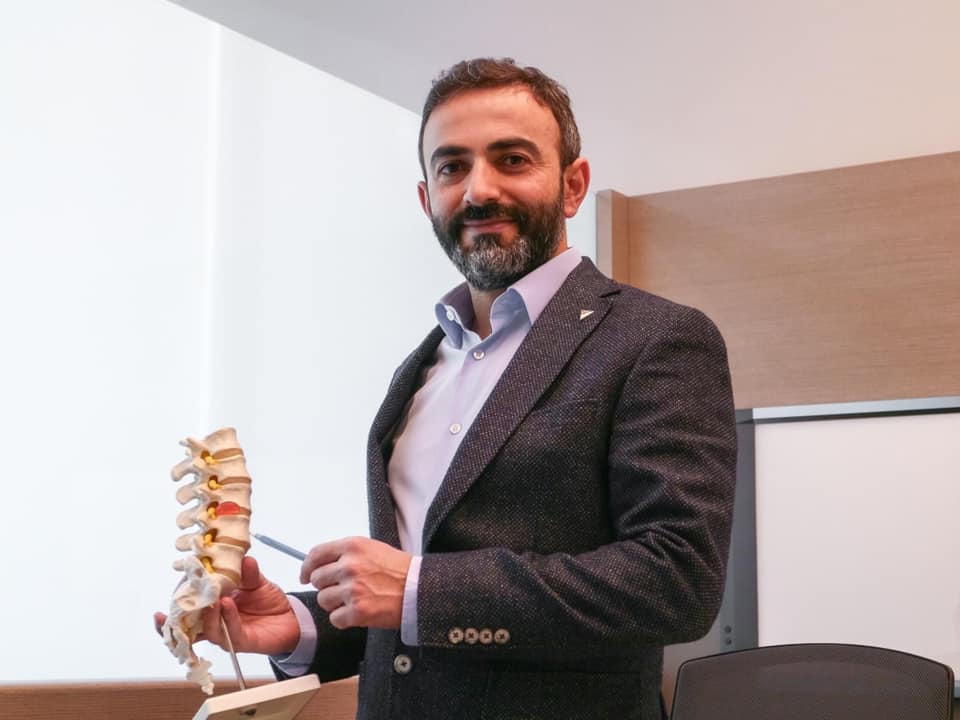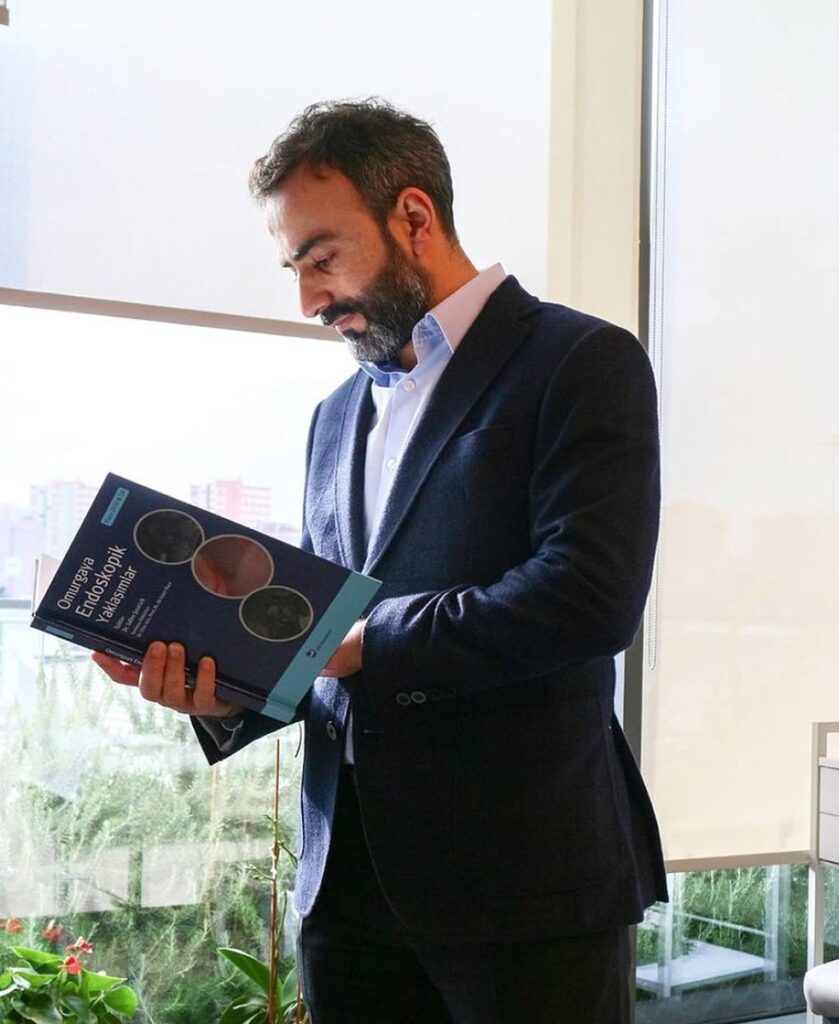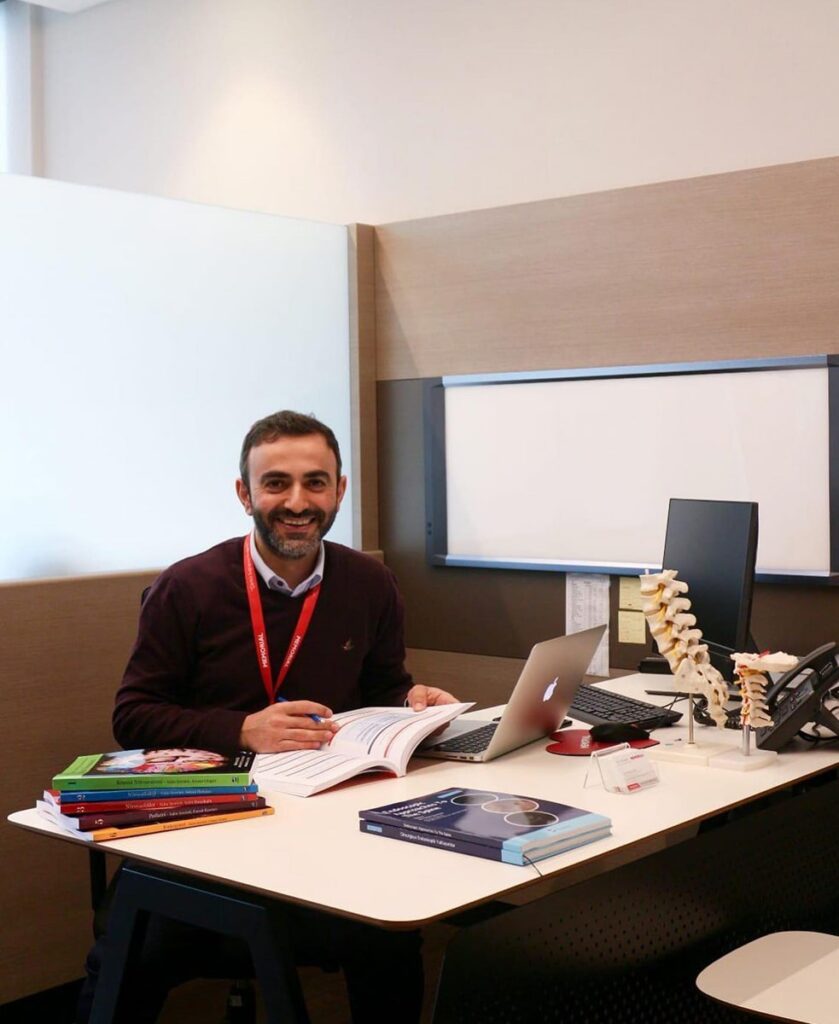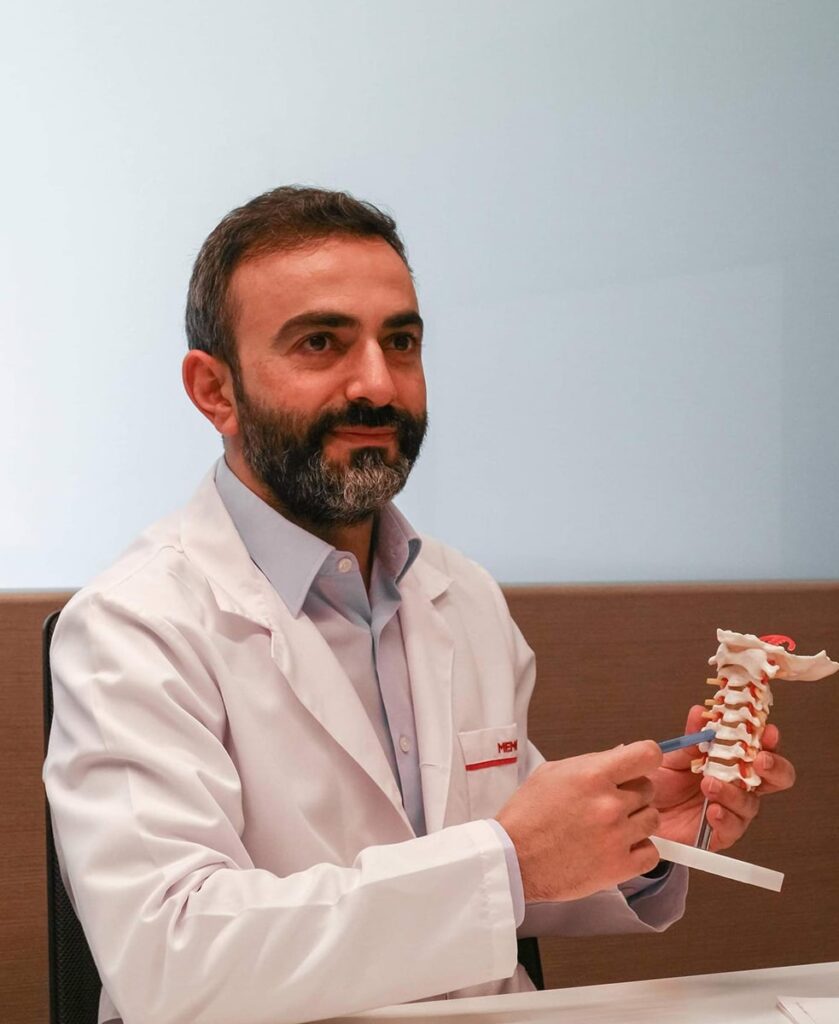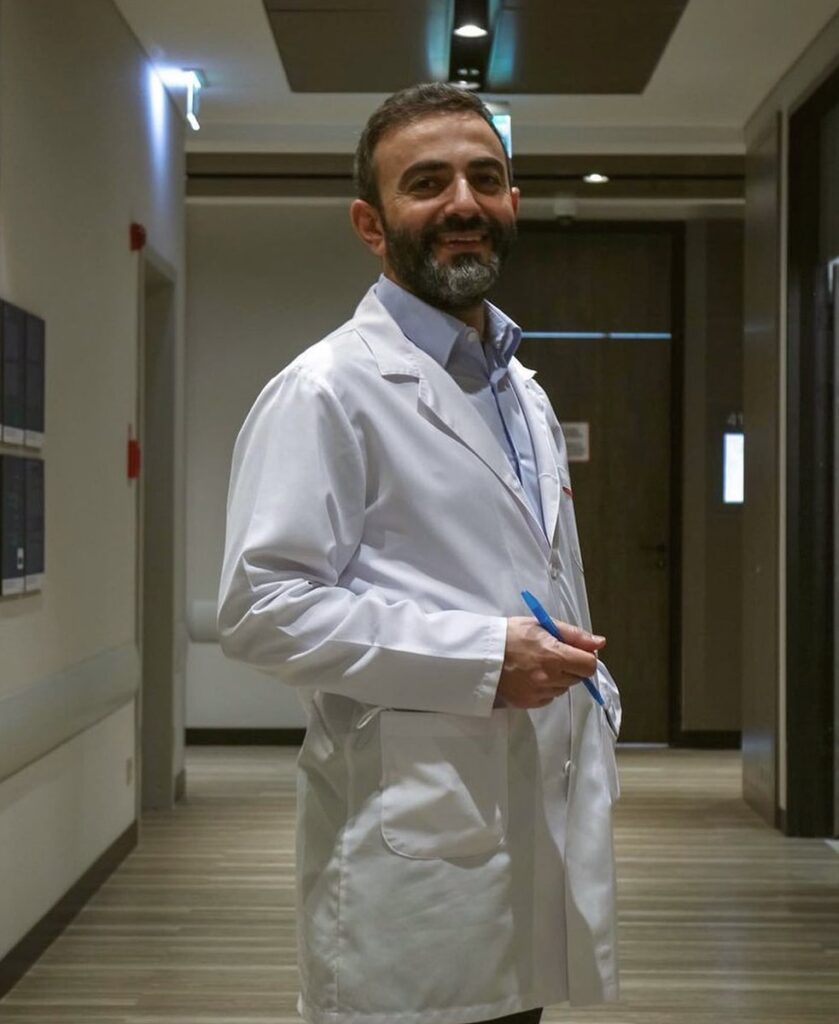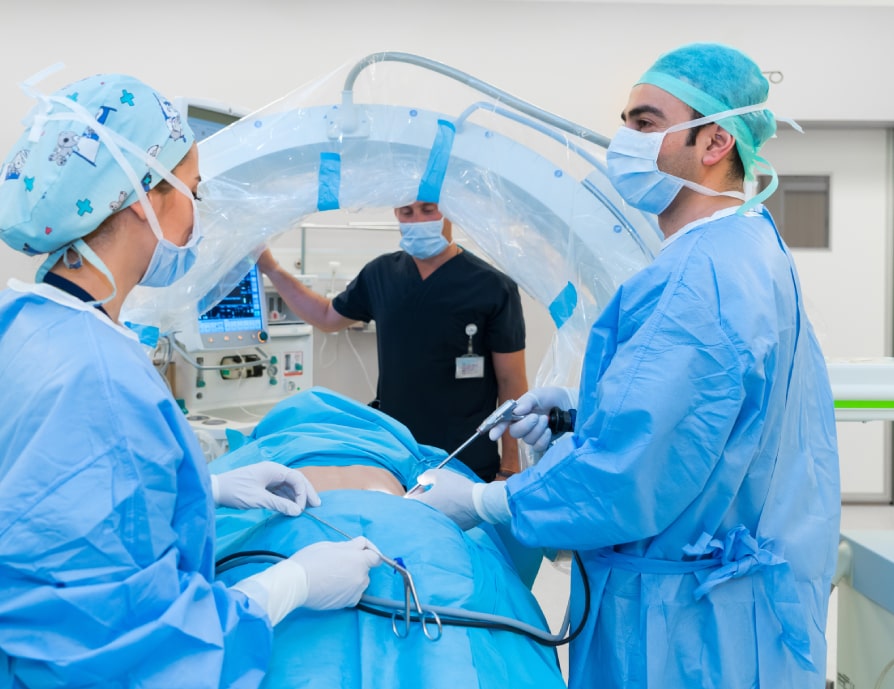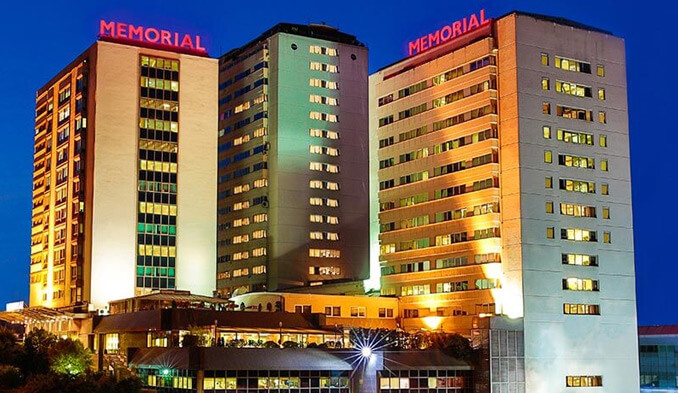Methods of treatment that Dr. Salim Shentürk uses in his practice:
- Surgery of the spine
- Discectomy
- Spinal stabilization operations (instrumented)
- Injection into the spine
- Neuro-oncological surgery
- Brain shunting in hydrocephalus
- Craniotomy
In his practice, Dr. Salim Shentürk applies endoscopic surgery to various spinal disorders. The method of endoscopic spine surgery was first applied in the lumbar region of the spine. However, not only disc herniations , but also many other pathologies are treated with endoscopic spine surgery. It is used in the surgical treatment of many diseases of the spine, such as hernias of the lumbar region and neck, narrowing of the spinal canal, spinal fractures, tumors, metastases in the spine, lumbar displacements. A working cannula with a camera is inserted through a 7 mm incision made in the skin. Fine instruments of 4 mm length are inserted through the cannula. Damage to surrounding tissues- muscles, bones is minimal.
Is endoscopic spine surgery applicable to everyone?
Endoscopic spine surgery cannot be applied to every patient. The method is applied at the discretion of the doctor and depending on the specific pathology of the spine.
What is the anesthesia for endoscopic disc herniation surgery?
In most cases, local anesthesia is given to the area to be operated on. With the decision of the doctor and the patient, spinal or general anaesthesia is possible.
What is the duration of surgery?
The average duration of the intervention is 25 minutes.
After how long can patients walk?
Because most surgeries are performed under local anesthesia, patients can move around for 2 hours after surgery.
When can patients return to their normal lives?
Patients operated by this method can be discharged on the same day. Because the incisions on the sacrum are small, there is only 1 suture wound, and muscle and tissue damage is minimal, patients can return to normal life within 2-3 days and work within 1 week.

